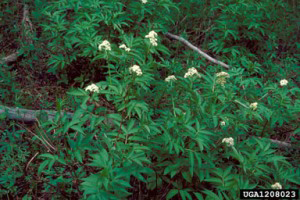Sambucus racemosa is native to the U.S. and is in the Caprifoliaceae (Honeysuckle Family).
Photo Credit: © Dave Powell, USDA Forest Service, Bugwood.org.
Sambucus racemosa
Common Name: red elderberry
Other Common Names: European red elder, scarlet elderberry
Plant Functional Group: Deciduous broadleaf
Class > Order > Family: Magnoliopsida > Dipsacales > Adoxaceae
